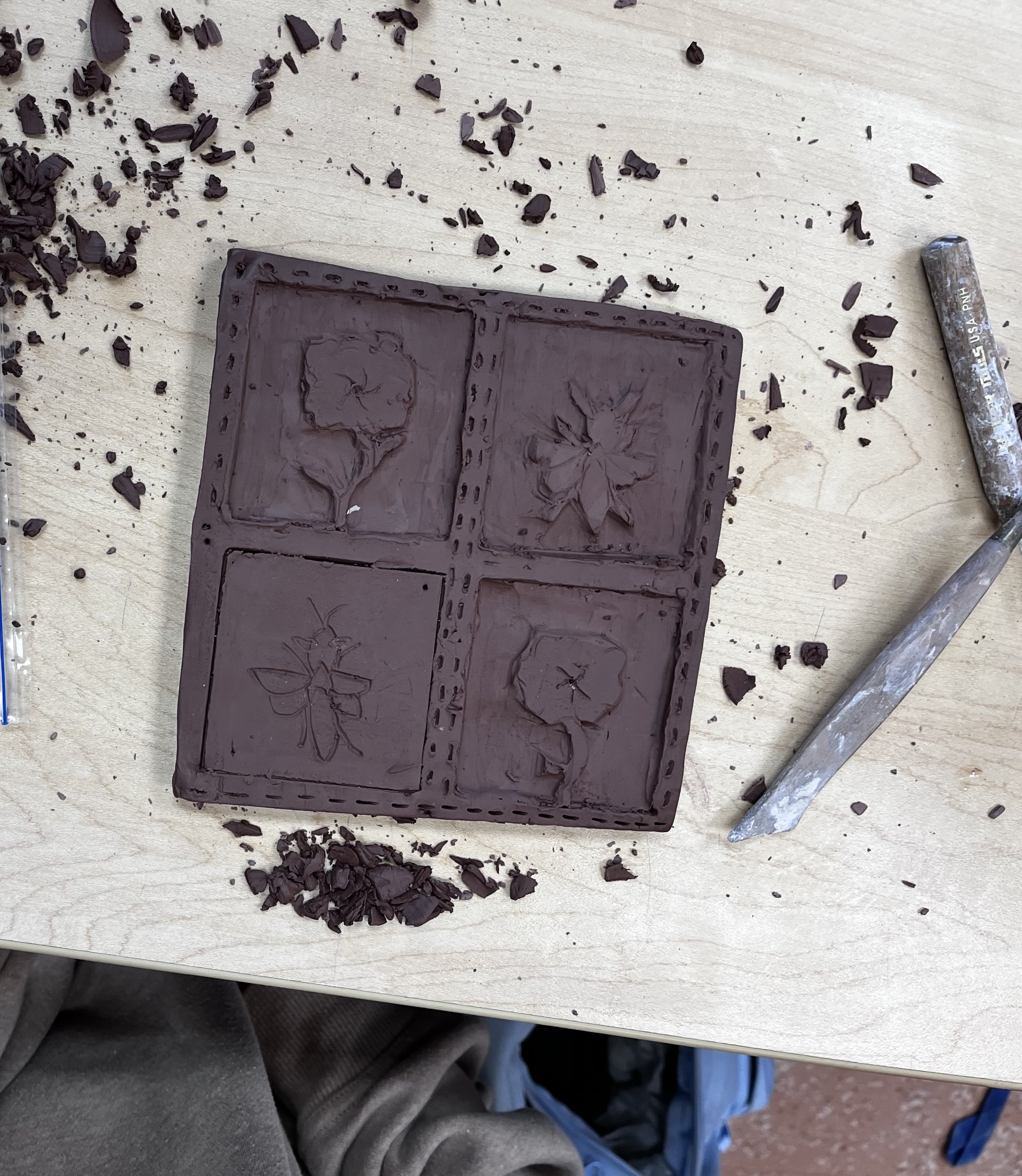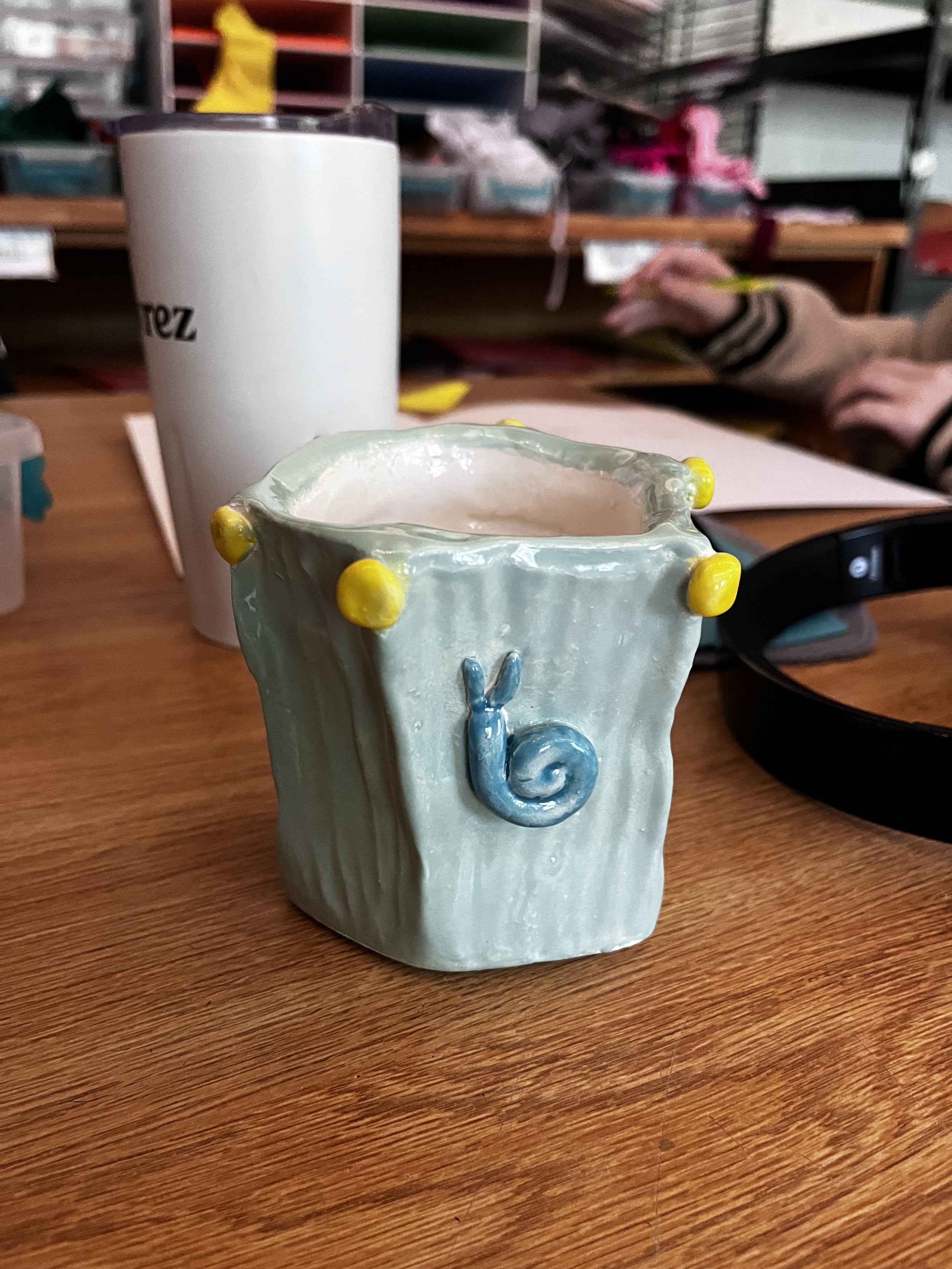Sixth Grade Still Life Drawing
Sixth-grade students used pencils, colored pencils, pens, oil pastels, and collaged construction paper to create these colorful multi-media still lifes. After learning about the ancient history of observational drawing, from Egyptian tombs to the Pennsylvania-Dutch still lifes of David Y. Ellinger, students created unique compositions while strengthening their artistic vision.
Full Lesson Plan here
Class Presentation here
Seventh Grade Moravian Tile Project
Seventh graders learned about Henry Chapman Mercer’s local Moravian Pottery and Tile Works and his relationship to the Arts and Crafts movement. Students were challenged to design and carve ceramic tiles depicting images from nature. These handmade tiles, finished with glaze, allude to the hand-crafted aesthetic of the Arts and Crafts movement, which sought to preserve pre-industrial ways of making.
Landscape Mono-prints
After looking at painter Gregory Condos’ series of Sacramento River paintings, first graders divided their papers into two sections creating water below, and land & sky above. They learned about background, midground and foreground using watercolor for the first background layer. We went on to add land using tempera paint, folding the top half of the page down to create a print every time a color was added. Students finished off these landscapes by adding details with oil pastels.
First Grade School of Fish
First-grade students started this project by reading The Rainbow Fish written and illustrated by Marcus Pfister and looking at pictures of fish native to Pennsylvania. After looking at the many types of fish bodies, fins, and tails students drew their own fish. Inspired by wax-resisted Indonesian Batik cloth, students created vibrant patterns with crayon and watercolor to decorate their fish.
Eighth Grade Textured Coil Vessels
Eighth-grade students explored the materiality of clay by learning to hand-build vessels using slab and coil techniques. Students were encouraged to let the process of building shape the form and function of their vessel. After coil building, students used carving, sgraffito, and additive techniques to incorporate texture and refine their pots.





































































